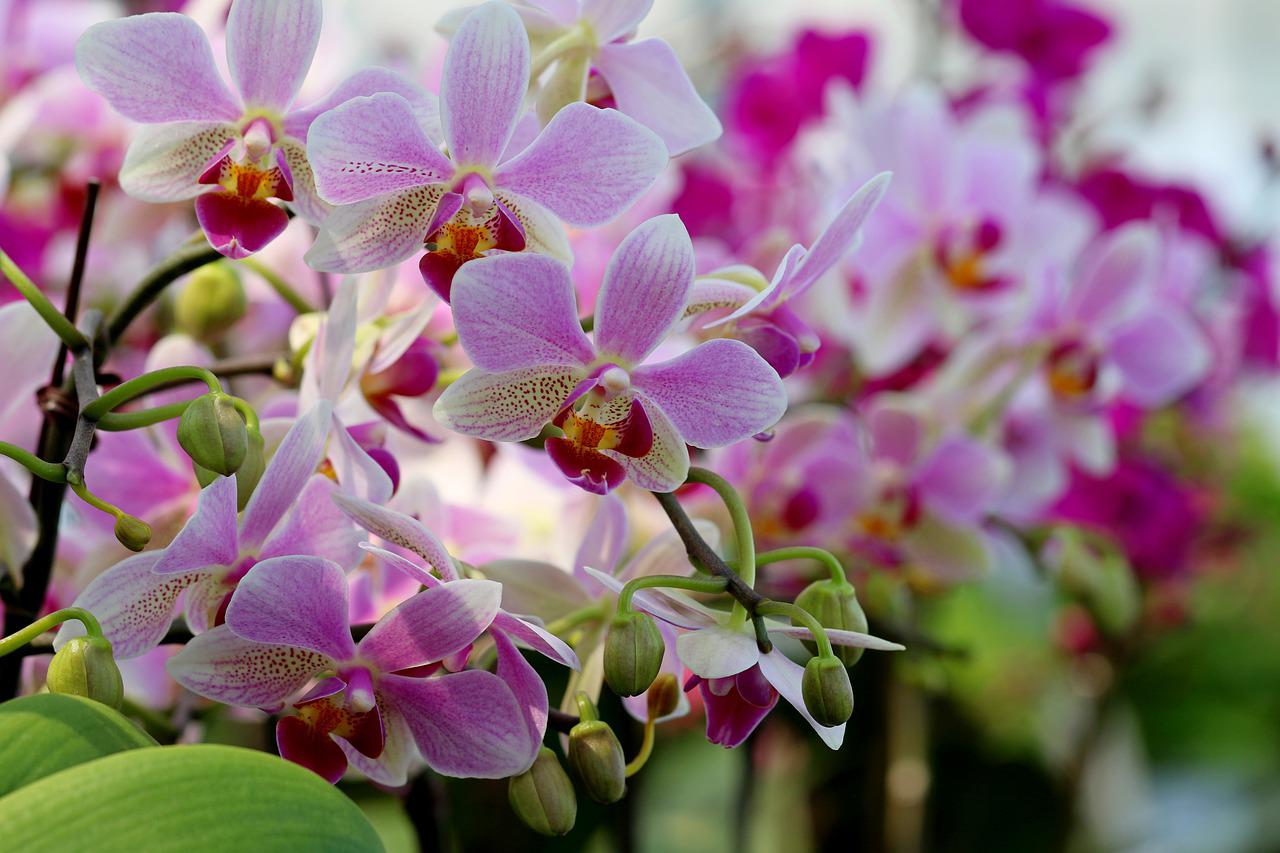
Yes, you can grow orchids! Good Earth Plant Company tells you our secrets to growing orchids. Photo: Pixabay
During the pandemic, many people learned about the benefits of adding plants to your indoor environment at home and work. This isn’t a news flash for our regular readers.
Study after study confirms plants help clean your indoor air of toxins, raise the humidity to healthier levels, contribute to an increase in oxygen levels, buffer noise, calm your nerves and help you focus. We’ll stop there.

Why display cut flowers that die in a week when you can display an orchid that blooms for six weeks – and doesn’t die? Photo: Good Earth Plant Company
Good Earth Plant Company works with many clients who like fresh cut flowers in addition to green indoor plants in their workspaces. Who isn’t impressed by a gorgeous display of flowers in a lobby or meeting room?
But if you’re committed to sustainability, cut flowers aren’t a great choice. There’s a serious impact on the planet transporting flowers to your local retail store.
Cut Flowers Aren’t Always Green
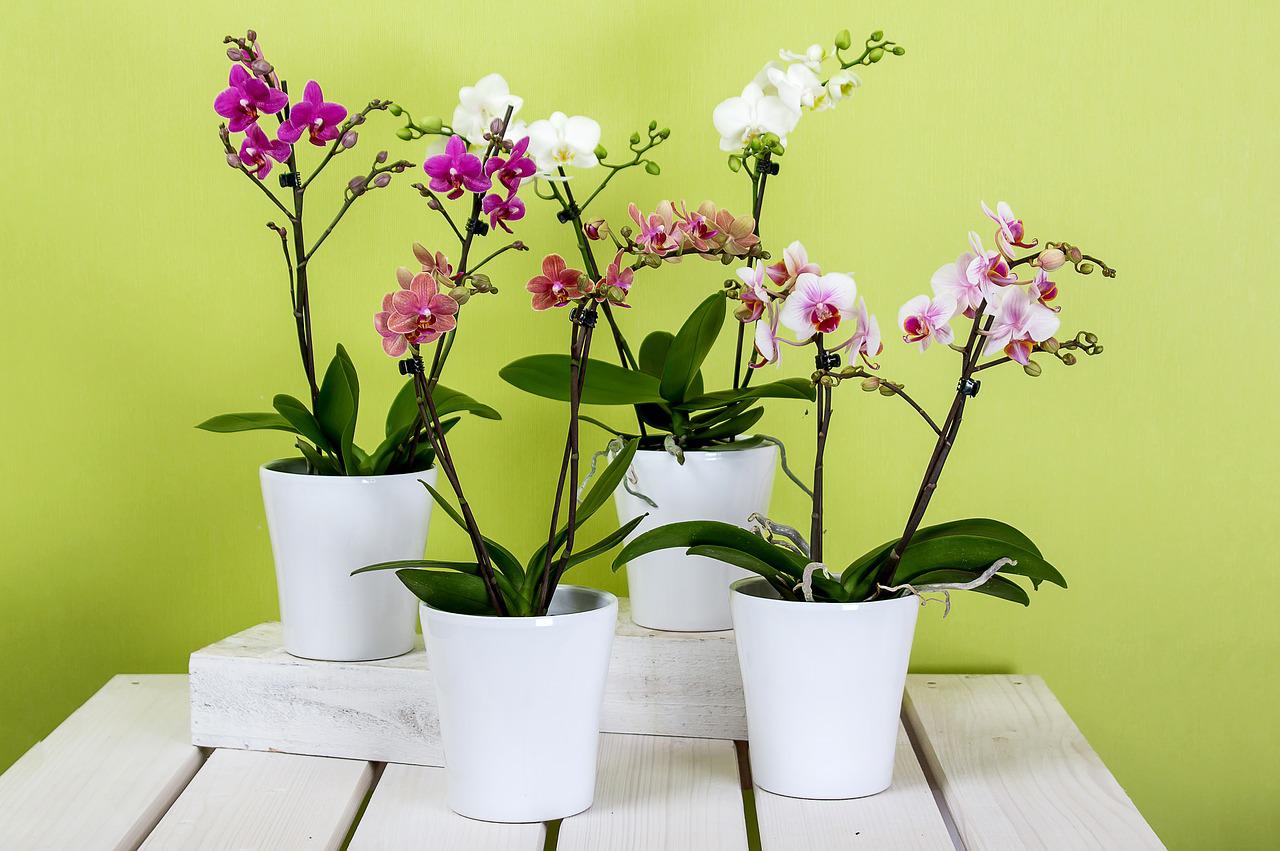
Orchids are a more eco-friendly floral choice. Photo: Pixabay
Most cut flowers sold in the U.S., especially over the cooler months, come from South America. The U.S. Department of Agriculture keeps a running total of flower imports into the U.S. Nearly 90 percent come from Colombia and Ecuador. Top imports are roses and carnations, mums, and “mixed bouquets.” In 2021, 9.5 million flowers were imported from outside our borders.
They’ve got to get here somehow. Most of the time, they are flown into the U.S. Thirty cargo jets fly from Colombia to Miami every single day in the month before February 14, and another 30 fly in from Ecuador. The International Council on Clean Transportation worked out the math. This is 360,000 metric tons of carbon dioxide into the atmosphere. Then refrigeration trucks drive them across the country to their final destination.
People who care about the planet are starting to push back with the “Slow Flowers” movement. It was created by outdoor living and American flower industry advocate Debra Prinzing. She has written books on this topic, and her website provides resources to find florists who use only U.S. or locally grown, sustainable flowers.
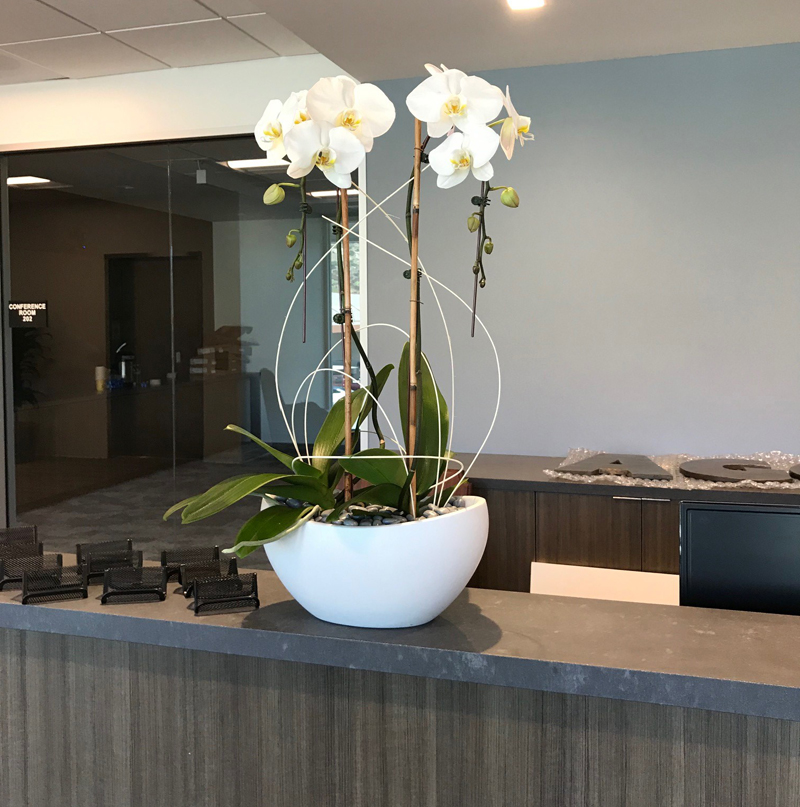
Good Earth Plant Company creates living art displays using orchids for our clients. Photo: Good Earth Plant Company
For many of our clients, we recommend living art instead. Often, these arrangements include blooming orchids. They last up to six weeks. Cut flowers might last one week. Good Earth Plant Company rotates out the old orchid before it looks shabby and donates them to nonprofits like our friend Paige Kries at Plant it Again. Our clients save money, help the planet, and ultimately provide plants for horticultural therapy programs.
The Secret’s Our About Orchids
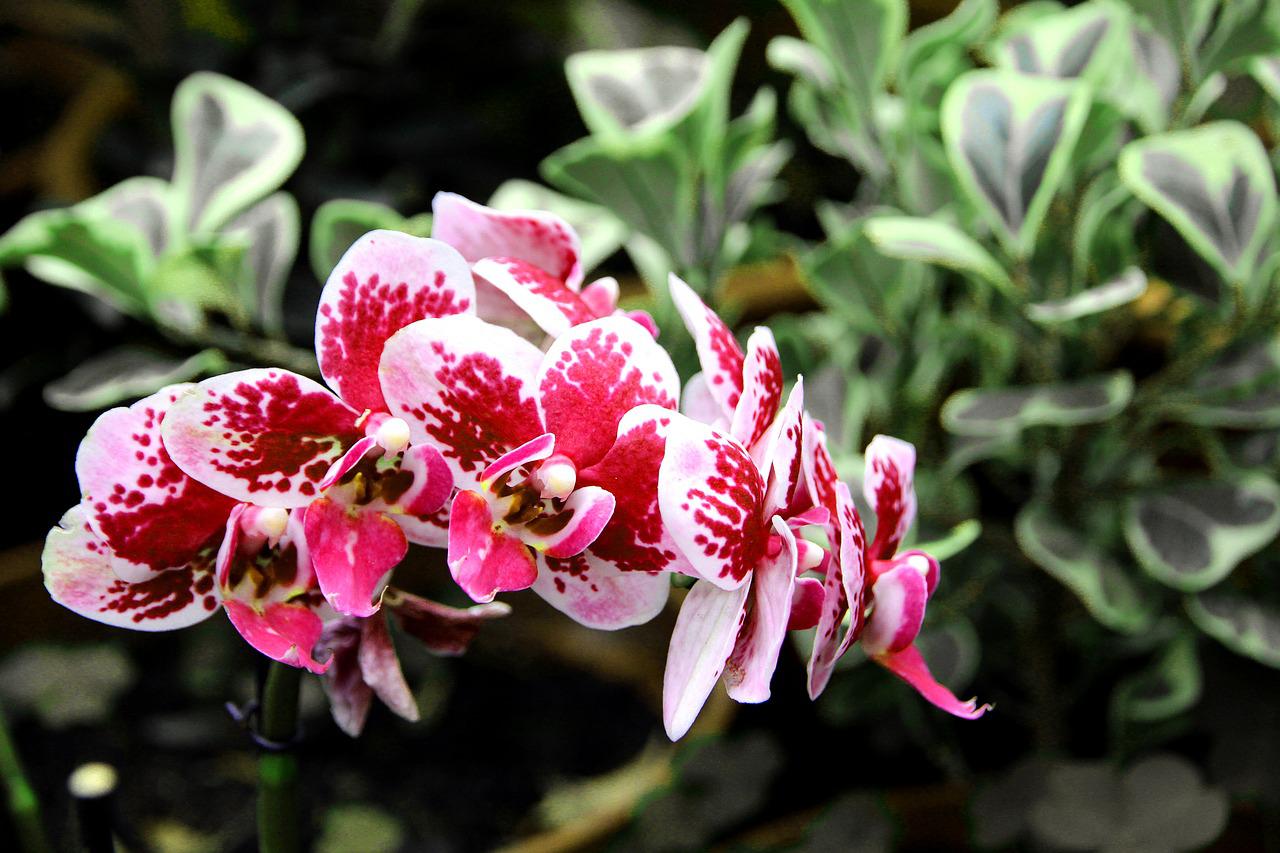
Orchids are the largest family of plants in the entire world. There are more than 30,000 species. Photo: Pixabay
Let me share a professional horticulturalist’s secret: Many varieties of orchids are among the easiest, most forgiving plants you can grow. They can tolerate a little lousy treatment. But it isn’t hard to help them flourish.
“But Jim,” you say, “I have a black thumb. I can’t grow delicate flowers like orchids!”
Orchids are the largest family of plants in the entire world. There are more than 30,000 species. Yes, some orchids are fussy, but most will grow in nearly any spot. Their stunning flowers bloom repeatedly and can last for weeks or even months. They come in dozens of variations with something for everyone to love. Some are even fragrant – try “cherry bomb” orchids. They smell like chocolate! Orchid arrangements are perfect for a work desk whether you work at home or are back in the office.
Advice for Successful Orchid Care
There are a few universal bits of advice about growing orchids.
Buy a healthy one from a reputable nursery. Yes, you can buy them at big box stores and even grocery stores, and you might be lucky, but choose one of San Diego County’s many wonderful garden stores. Or – sign up for our color rotation program.
Look for healthy leaves that are firm and medium green in color. If they are too dark, the plant isn’t getting enough light. If they are light green or yellow, the plant receives too much light. Too little light is easier to fix. If any part of the plant is brown, choose another plant. Visible roots should be firm and have light colors. Mushy and brown are a problem.
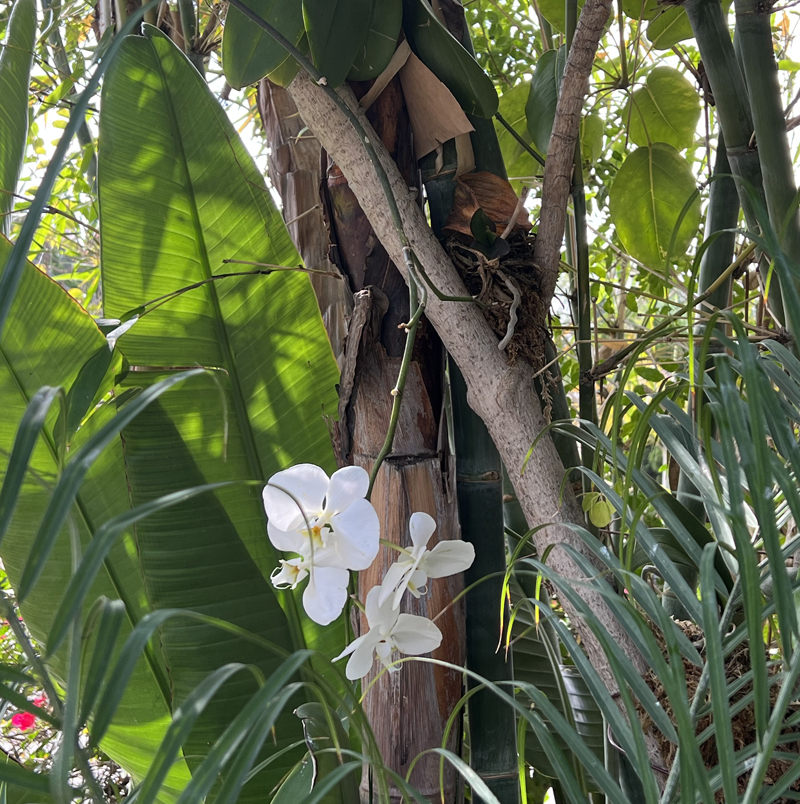
Orchids are air plants (epiphytes in nature) and often grow on trees. I planted these orchids on a tree at my San Diego home as an experiment. They’re flourishing! Photo: Jim Mumford
Many orchids are air plants (epiphytes) in nature, growing on rocks and trees. They get water and nutrients from the air, not soil. When you grow orchids as indoor container plants, you should use a special soil mix that may include bark, moss, and perlite, which lets the orchids breathe and absorb food. Many decorative orchid pots have openings on the side to allow the plant to breathe.
Orchids growing in native rain forests or jungles are under tree canopies, where they don’t get direct sun. So please don’t put them in a hot window. Find a spot with indirect morning or afternoon sun. East, west, and north-facing windows work well.
Don’t overwater!
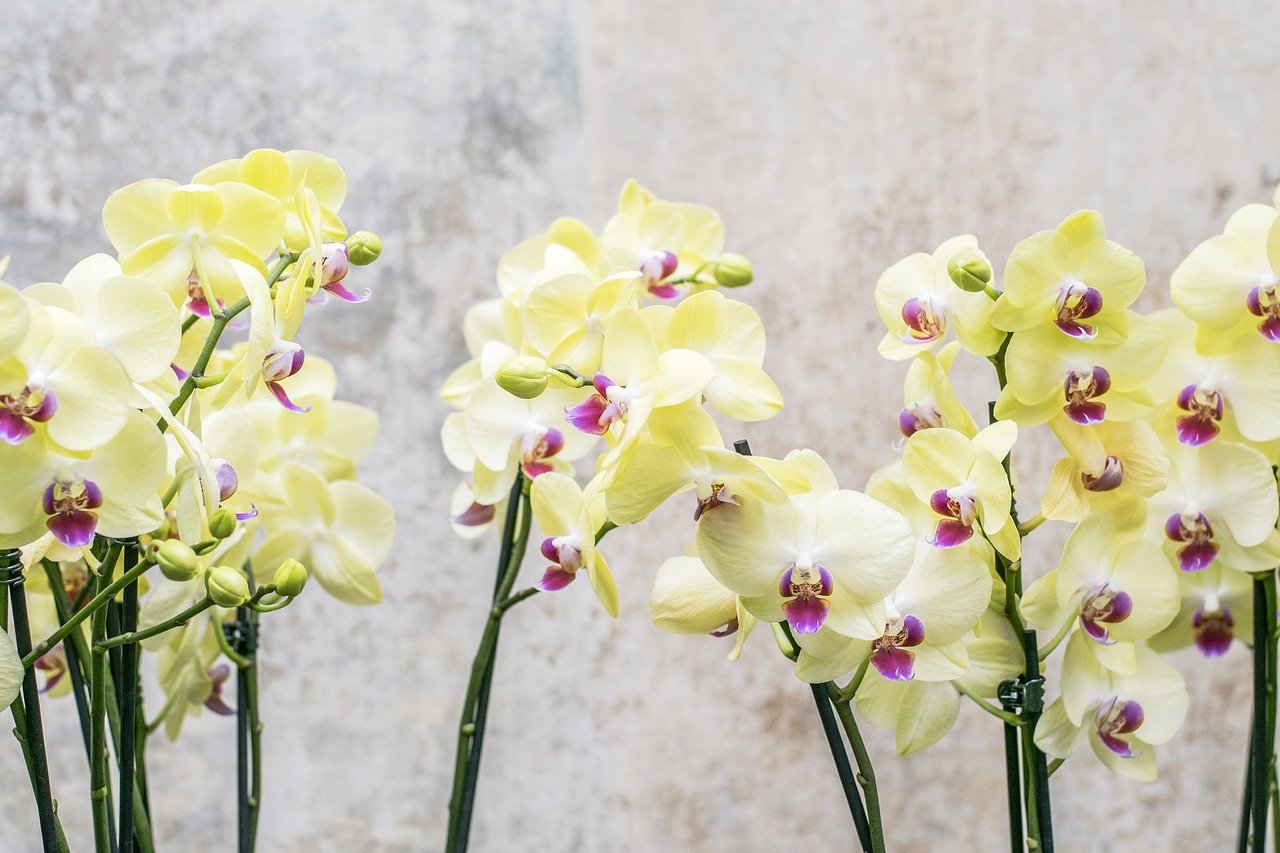
To keep your orchids healthy, avoid overwatering. Photo: Pixabay
The most important advice is the same we give for all indoor plants. Don’t overwater! Orchids like humidity, but they don’t like to drown. They can’t absorb nutrients when soggy. But they don’t like drying out, so check them and water as needed. If your orchid is sitting in a special cache pot (a plastic pot inside a container with no drainage), make sure you empty the cache pot after you water your orchid. We don’t advocate using ice cubes.
Orchids like 40% to 60% humidity, which is also healthy for people. They like air circulation – not blasting AC, but a room with a ceiling or floor fan is ideal.
Of all the thousands of orchid varieties, a few are especially good for beginners and easy to find. These might already be familiar to you.
Good Earth Plant Company’s top choices:
Phalaenopsis Orchids
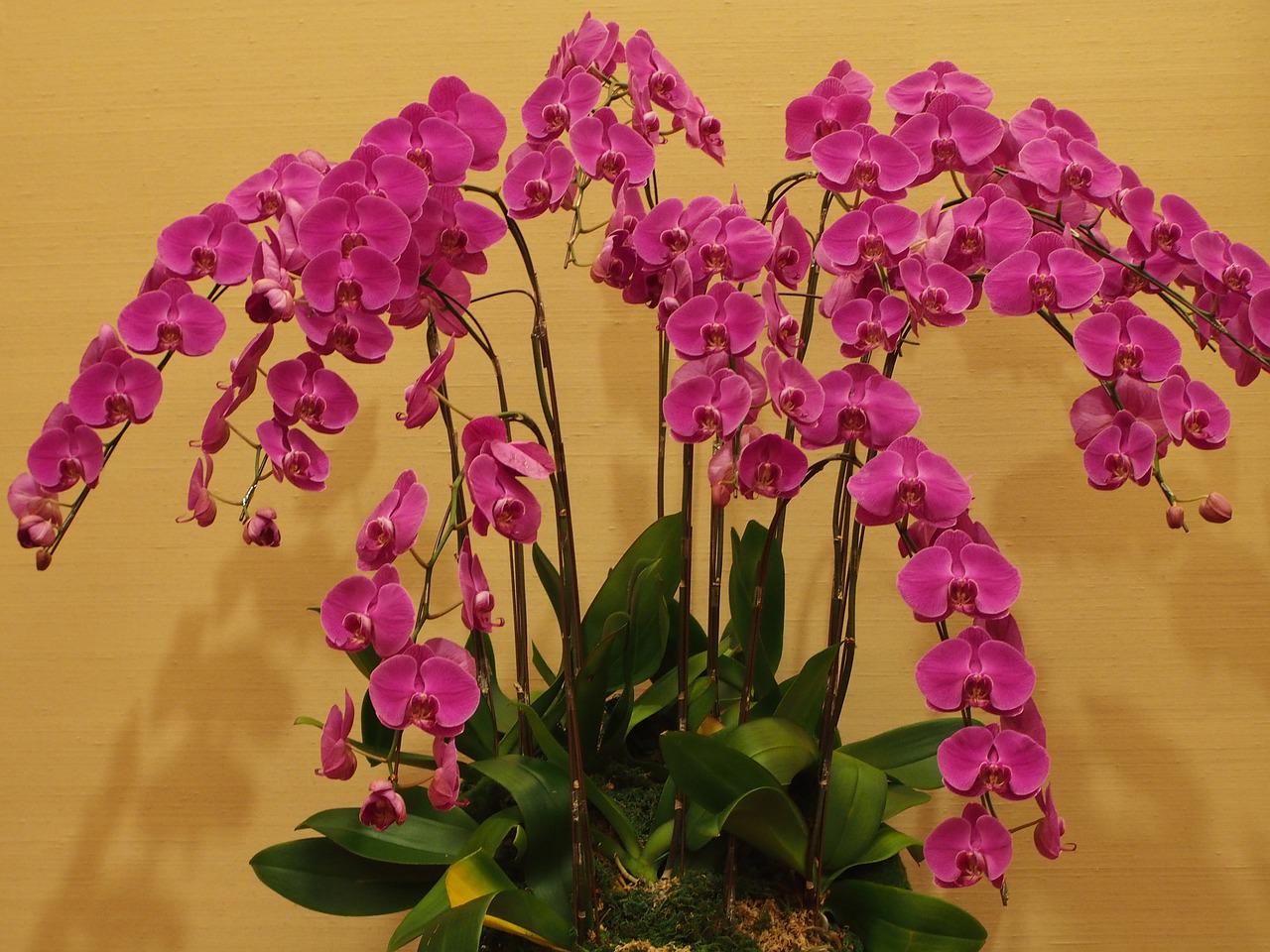
Phalaenopsis Orchids are the type we often use in our displays at Good Earth Plant Company. Photo: Pixabay
These are also called moth orchids. They bloom throughout the year, and one bloom spike can last for four months. They like consistent room temperatures in a home or office to help them thrive. The flowers come in white, pink, red, green, yellow, orange, and purple. They are available nearly anywhere and are very affordable.
If you want your moth orchids to bloom, put them outside at night or in a cool area like a garage (if the temperature stays above 50 degrees). A drop in temperatures at night helps encourage them to bloom.
Cattleya Orchids
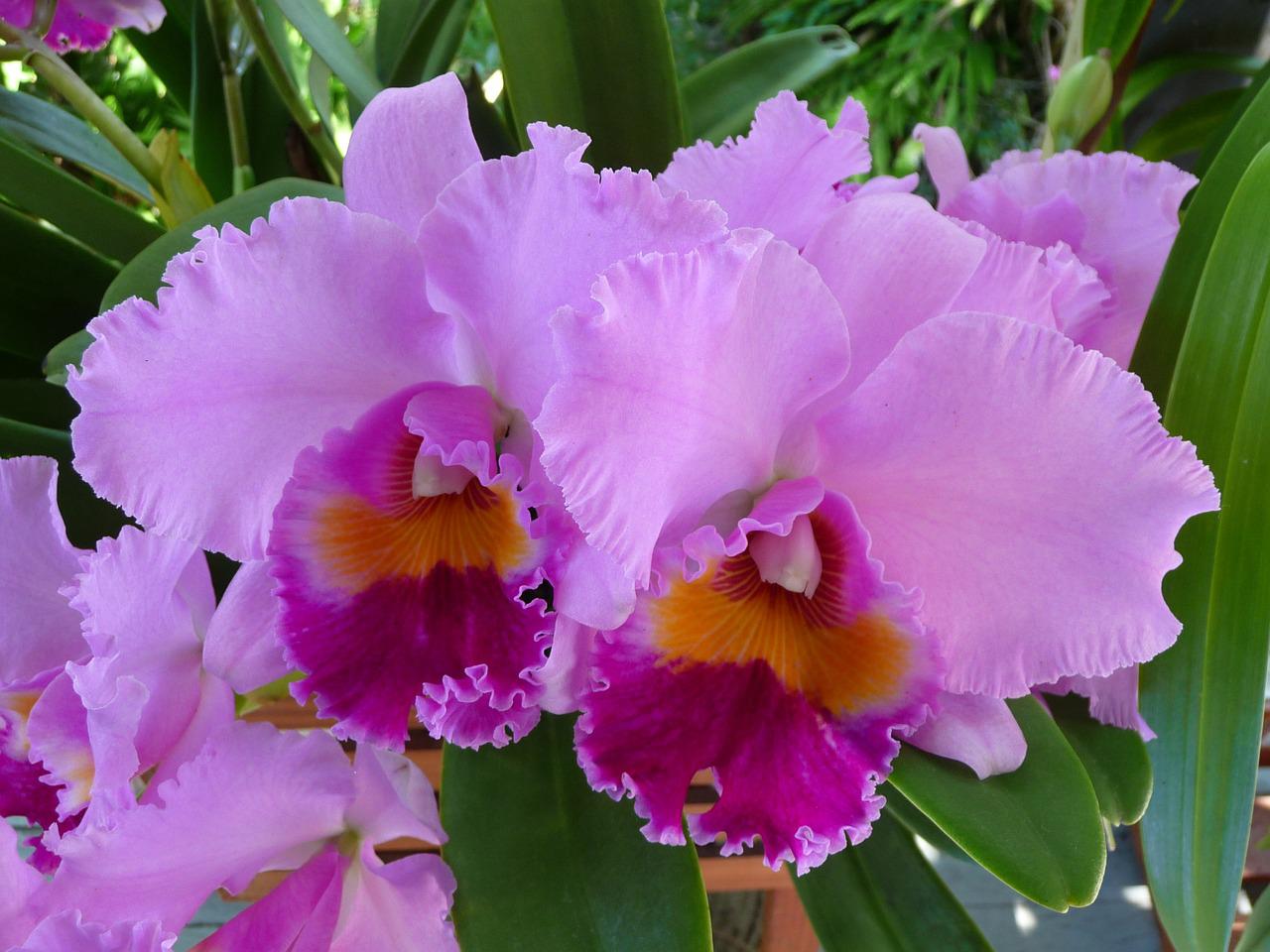
Cattleya Orchids are the type you see in corsages. They grow best in indirect light. Photo: Pixabay
These are the type of orchids used in corsages. These are large orchids and come in hundreds of hybrids. Cattleyas like lots of indirect light. Water them weekly and feed them monthly from March to September with orchid fertilizer. They will bloom twice a year, and the flowers last for weeks.
Cymbidium Orchids
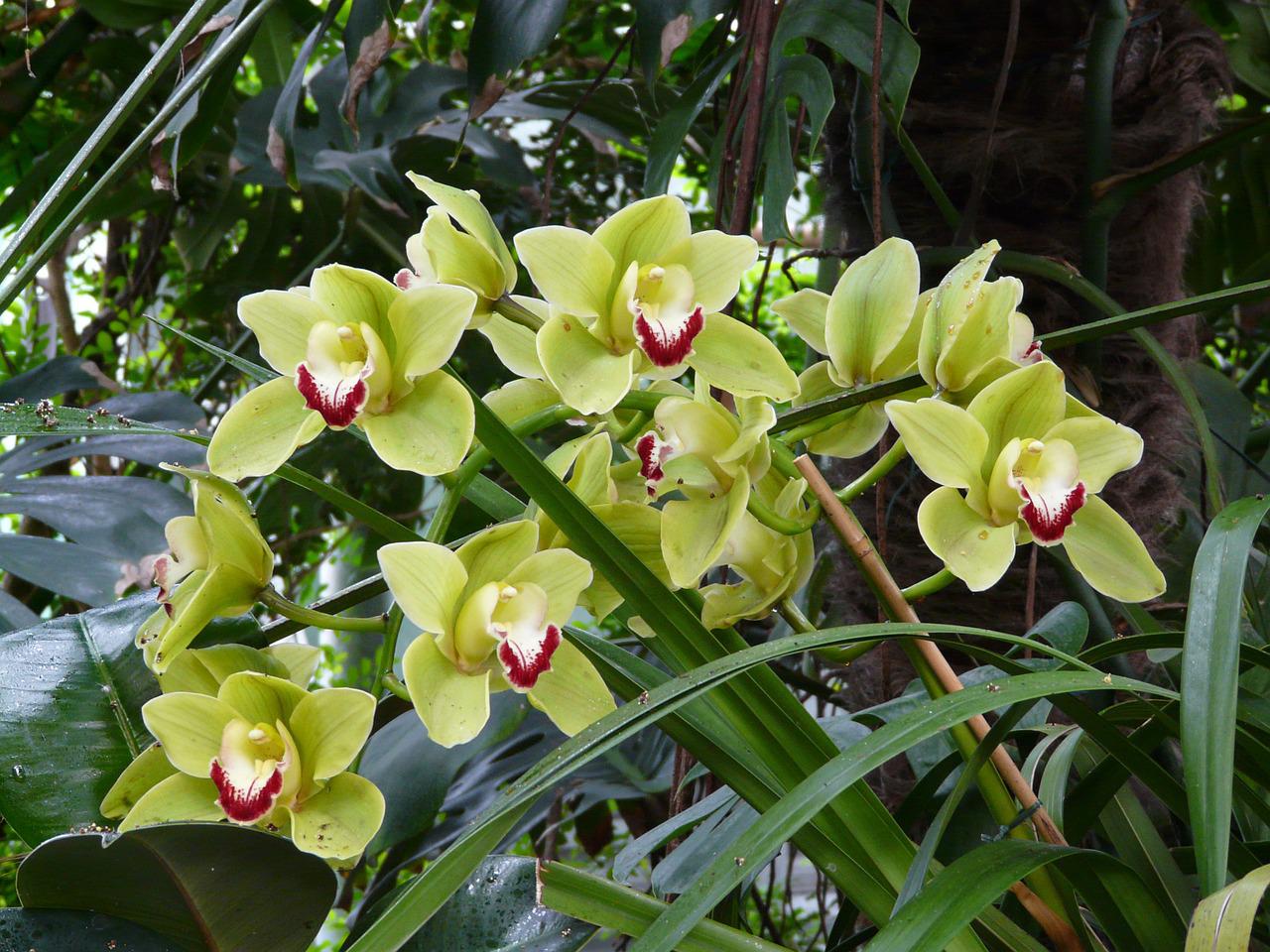
When you see large sprays of orchids, they are usually Cymbidium Orchids. Photo: Pixabay
Cymbidium orchids produce spectacular displays. They like bright light, and you can even grow them outdoors in a mild shady spot under a patio roof during the summer. Water them weekly and fertilize them monthly. Cymbidium orchids will bloom in the winter months if you place them in cool temperatures under 50 degrees for several weeks, like a Christmas cactus.
If you live in San Diego County or need a reason to visit, the San Diego Botanic Garden hosts its second annual spring orchid showcase, “World of Orchids,” open now through Sunday, June 12. The Botanic Garden exhibition is in the 8,000 square foot Dickinson Family Education Conservatory. The show will feature sales of plants, potting materials, reference guides, and other merchandise by vendors, conservation organizations, and local orchid societies on select days.
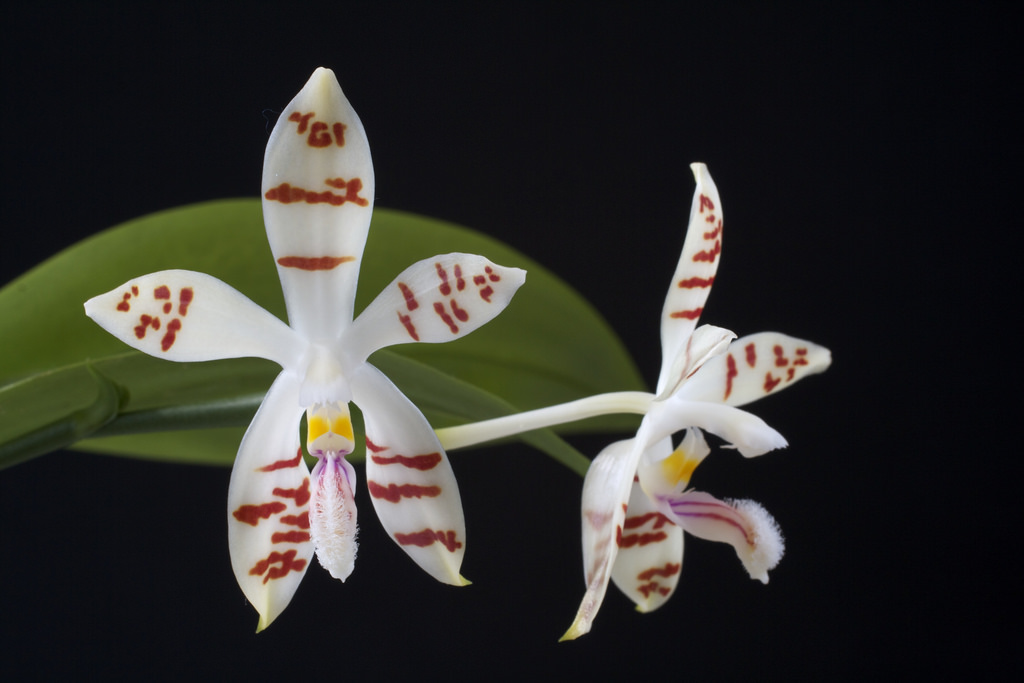
See orchids of many different varieties at the San Diego Botanic Garden through June 12. Photo: Pixabay
“This show invites visitors to enjoy the vibrant colors, elegant shapes, and intoxicating scents for which orchids are so well known, but it also surprises visitors with flowers of unexpected sizes, shapes, and scents,” said President and CEO Ari Novy, PhD. “Orchids comprise one of the largest and most diverse families of flowering plants in the world. With hundreds of different species and hybrids on display, this show offers even seasoned collectors the opportunity to discover a strange and delightful new orchid.”
Find out more about the special program on the Botanic Garden’s website.
If you really, truly can’t grow orchids or other indoor plants, try today’s replica plants. The quality is better than ever, and they confer many of the same benefits. They don’t clean the air, but they do improve your mental health and provide the crucial biophilic connection to nature all human beings need.
Good Earth Plant Company is always standing by and ready to come to your rescue. We know how to keep indoor plants thriving in almost any environment under any conditions. We’ve been enriching peoples’ lives with orchids and other plants for more than four decades. We’re ready for any challenge. Email me at jim@goodearthplants.com – our green thumbs are ready to go to work.
